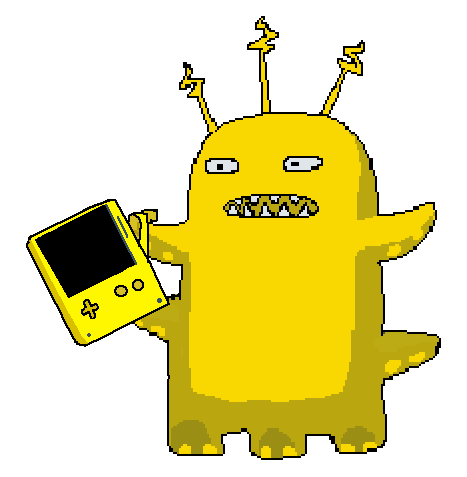
As we move towards the end of this adventure, it is time to focus on the Major Project module. By the end of this first sprint I should have a complete collection of relevant research material to construct appropriate hypotheses, questions and/or aims to set you on your journey towards the completion of my project.
Things are getting really serious!
The yellow fever
The Playdate handheld: from the moment I knew of its existence I said to myself that this little wonder was what I needed to renew my passion in the creation of video games!.
And not only that, this little piece of hardware seemed to be a real portal to intertwine two eras of my life: that of the late eighties when my hex dumps reflected long hours of assembly language programming for the Z80, the 6800 and… today.
Through all these years I have been able to see how the life of an indie developer has become more and more complicated, to the point that there is not much evidence that shows that a single person can make a living from this professionally and that perhaps it would be wiser to relocate this activity as a mere hobby; like a caged beast that is imprudently left for a few hours with the gate open.
Everything seemed to indicate that it was time to put the fury back in its box. And even that may still be the recommended course of action, but for the next few months I’m going to play the distracted tamer and let the creature stretch its legs and hooves a bit.
Getting a Playdate unit was not easy, I almost felt like I was in that sequence with which we are introduced to the world of the Mogwais in the Gremlins movie. I had to wander through dark digital alleys and bribe a few people along the way to get my little yellow treasure. A little square of humble technology that has been giving me countless moments of emotions.
From today I’m going to tell my adventures and misadventures in the Playdate universe and how I’m using it to realise a project that has been circling in my head for decades.
What greater justification could there be than to base my research on the fresh opportunities that this tiny console might bring to the independent developer community going forward and how my work might contribute to this potential phenomenon. Fortunately, the development kit was made available a few weeks before to the publication of this entry, giving me the opportunity to begin developing some prototypes while I awaited the delivery of the hardware.
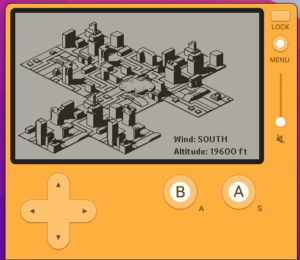
I invite those who want to know more about this attractive handheld to read my post from last year where you will find some technical details of interest. But the wait was to be announced longer than expected, not only the delays caused by the pandemic, but also a serious problem with the batteries of the first finished units caused the manufacturers to stop for long months the release of the orders.
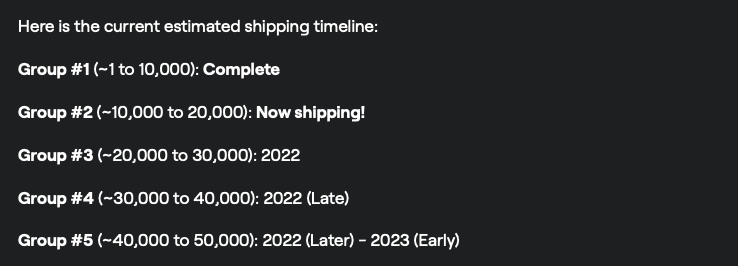
As you can see in the table above, less than 20’000 consoles have been delivered to their buyers, estimated to be close to 50’000. Having rushed to order mine almost two years ago, I was recently informed that my device was part of the third ‘wave’ of deliveries, which was not good news. Even being optimistic, I would not have a physical unit with which to test my creations until the end of the year.
This was undoubtedly a major obstacle for the development of my work. It is well known that emulators are usually not very reliable when it comes to providing a realistic simulation in terms of the speed at which the graphic elements are displayed on the screen, among other things.
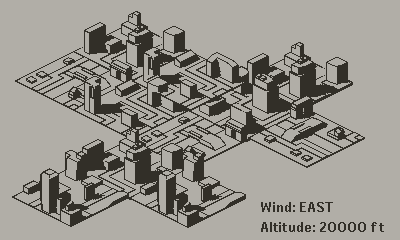
In any case, this project cannot be based on simulations provided by the development software running on a computer, so my supervisor made it clear that I was going to have to get a Playdate at any cost. That was not an easy thing to do: I didn’t know anyone who could lend me one, the few units distributed were mostly located in the United States. An alternative would be to send the code to a member of the developer community who had the hardware in question and would voluntarily test my programs, but that seemed to be a tedious and unreliable process. Even worse, the number of people who had gotten one of these handhelds and were willing to sell it on eBay or some other similar platform could be counted on their fingers. However, thanks to the help of some contacts on the handheld developer forum (thank you guys!) I was able to get my ‘development unit’ in record time.

That gave me enough confidence to progress in the direction I had set out to go. During the first few tests it was gratifying to discover that I could see virtually no difference between what the development kit showed on my computer screen and what the actual hardware could do on its own.
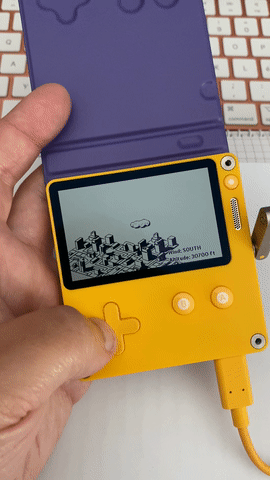
Want to go on a playdate with me?
What I didn’t imagine was that getting a profile of the typical user of these little machines was going to be so hard. After weeks of consulting with the people at Panic(c) -creators of the handheld- on these issues, few concrete elements could be provided, despite their active collaboration.
To date, the results of the survey have not been published and I don’t even know for sure if this data will be released to the community. I had no other option but to launch a parallel investigation by my own means, in the hope of being able to compare it with the official version at some point.
Almost as a conditioned reflex I opted to ask on Twitter about the age and other demographic details of those who had ordered one of this units. Even having a significant number of followers, the responses came in dribs and drabs.
Somewhat frustrated, my second idea was to do the same on the official developer community forums: lousy idea, my posts were practically ignored there (however, it may be thanks to them that the company decided to publish the survey I mentioned above, since suspiciously both things happened within a few days of each other).
I decided to check back with the folks at the Panic(c) press office. They graciously told me that my questions were being redirected to the specific people in charge of each area, but after weeks and weeks of waiting I still couldn’t get anything concrete.
My next logical choice was to keep looking for some other social network or forum where the large family of Playdate users could meet. I started pulling the tip of itch.io, a popular gaming platform where little by little those who were encouraged to publish their creations for this console were having their space.
That led me to two subreddits on Reddit, where I could finally have a more than satisfactory and enlightening feedback!
To avoid pushing through a boring series of questions, I tried disguising the online survey as follows, simplifying the demographics in 3 large categories associated to very specific culture references from different time periods.
It worked like a charm, I got a lot of juicy information in a matter of minutes!. People seemed to feel very involved and enjoyed the approach, which gave me the opportunity to refine my research afterwards.
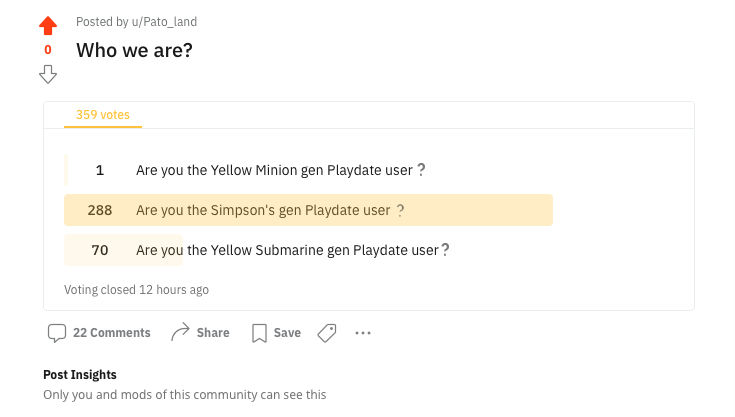
If you are curious to know what other mysteries are hidden in this small yellow box I invite you to read my next post!.